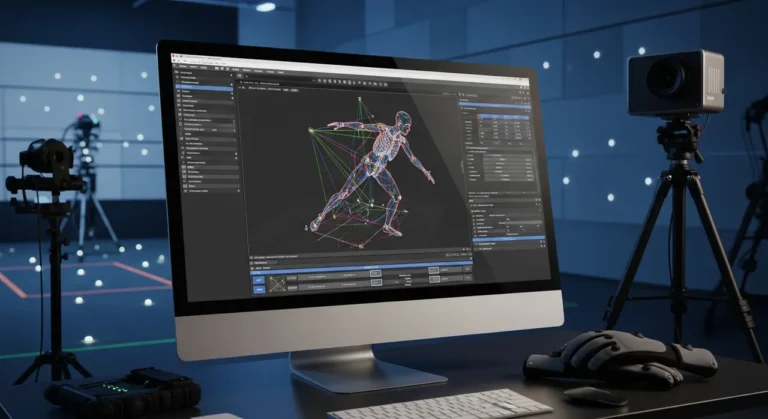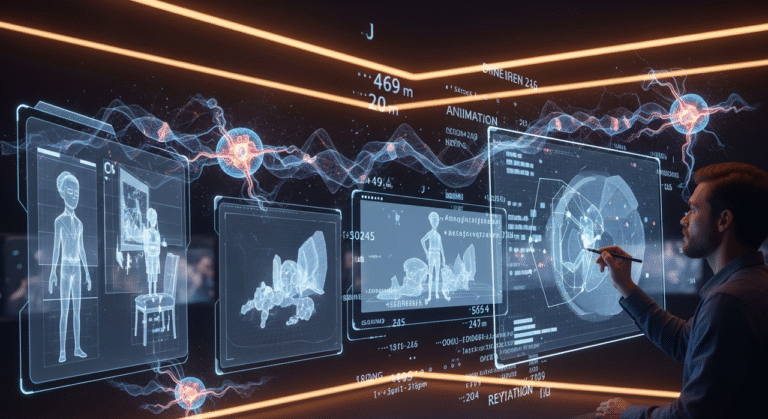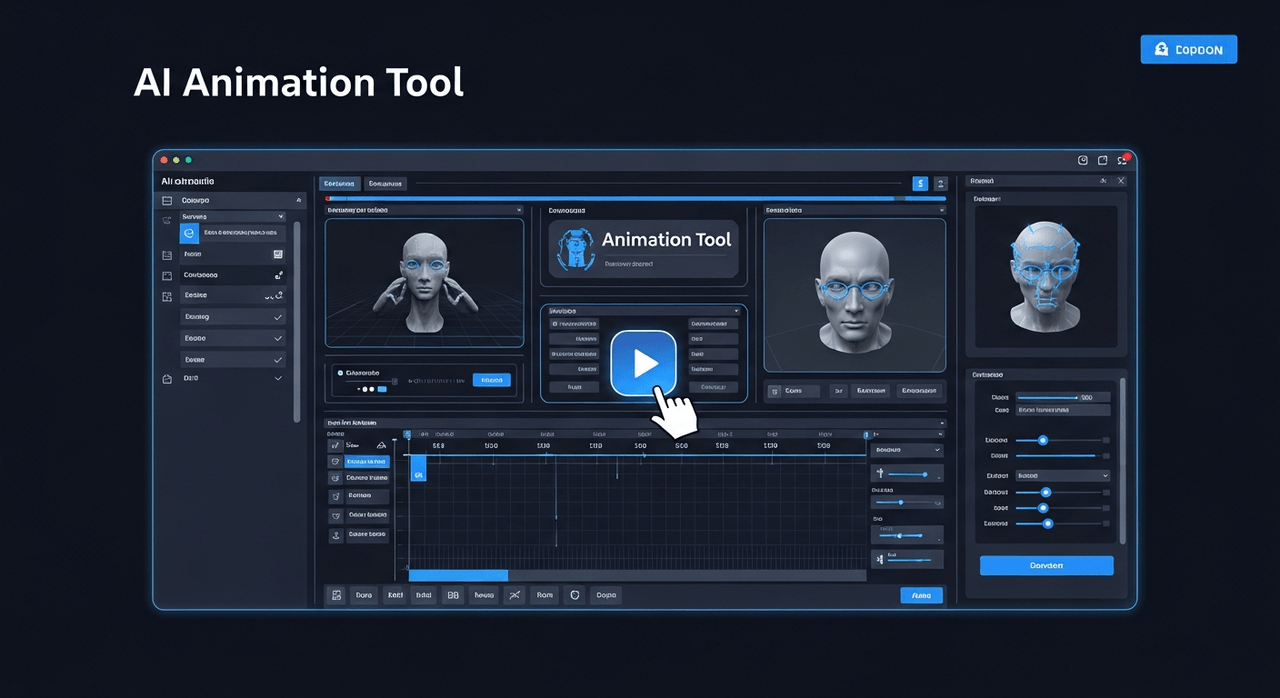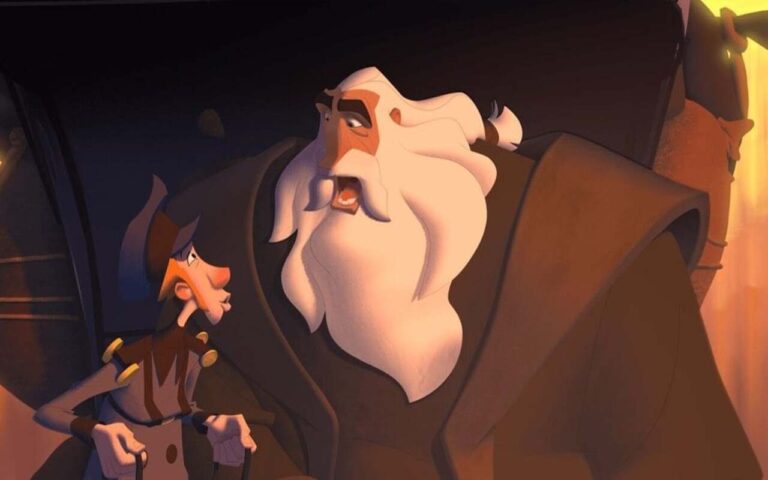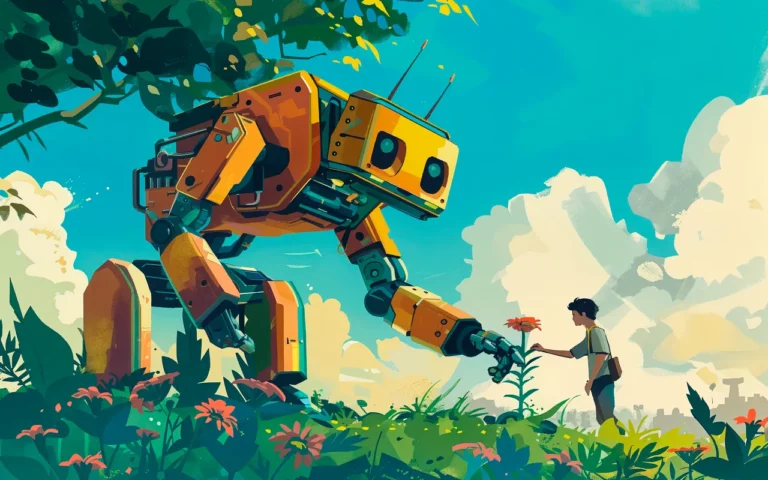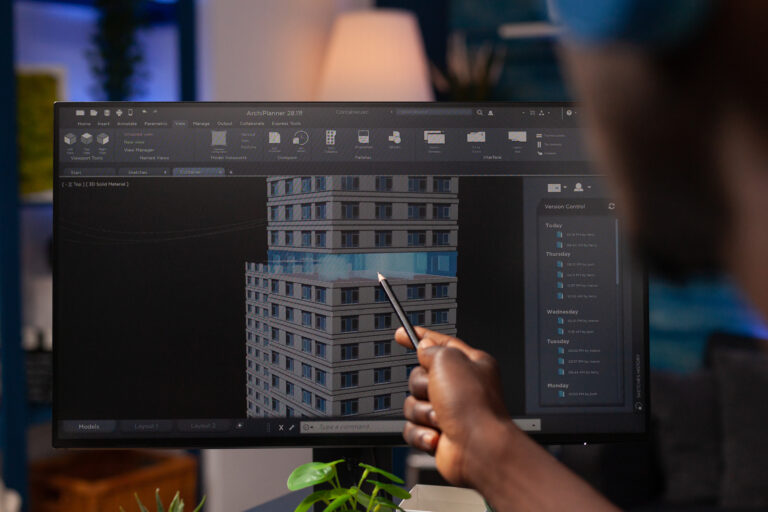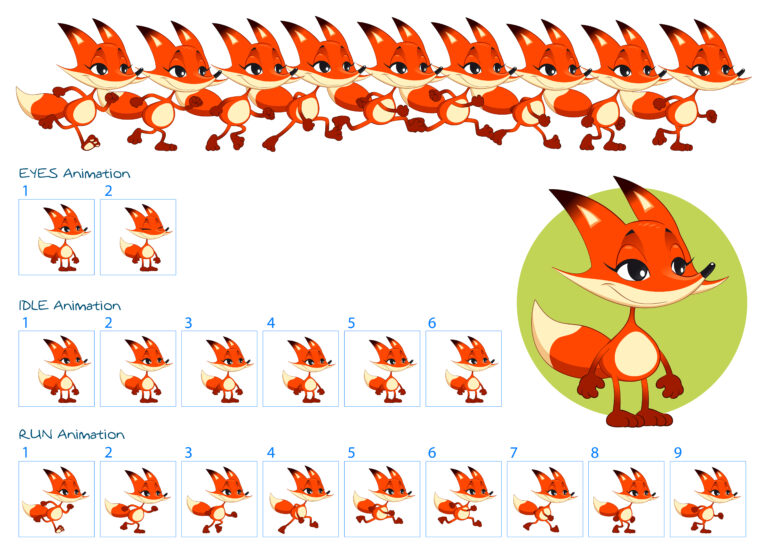Well-crafted facial expression animation is what separates professional animation from mediocre work. The face is the most expressive part of our body when it comes to emotions. Creating believable facial animations is a challenging task. In this article, we will cover what you need to know to animate facial expressions and emotions properly. Stay tuned.

Need Animation Services?
Visit our Animation Service page to see how we can help bring your ideas to life!
Understand the Basics of Facial Anatomy
Animating facial expressions and emotions requires some understanding of facial anatomy. Understanding how different facial muscles work is crucial. It is not necessary to memorize the names of the muscles, but animators should understand how moving each muscle affects the other parts of the face.
Facial muscles have different shapes and orientations. Some are extended vertically, while others are either horizontal or round. For example, the frontalis muscle, which extends along the forehead, is a vertical muscle that, when pulled down, creates a frowning expression.
Watching anatomy videos to understand how these muscles work together can be very helpful.
Read More: All You Need to Know about Human Anatomy
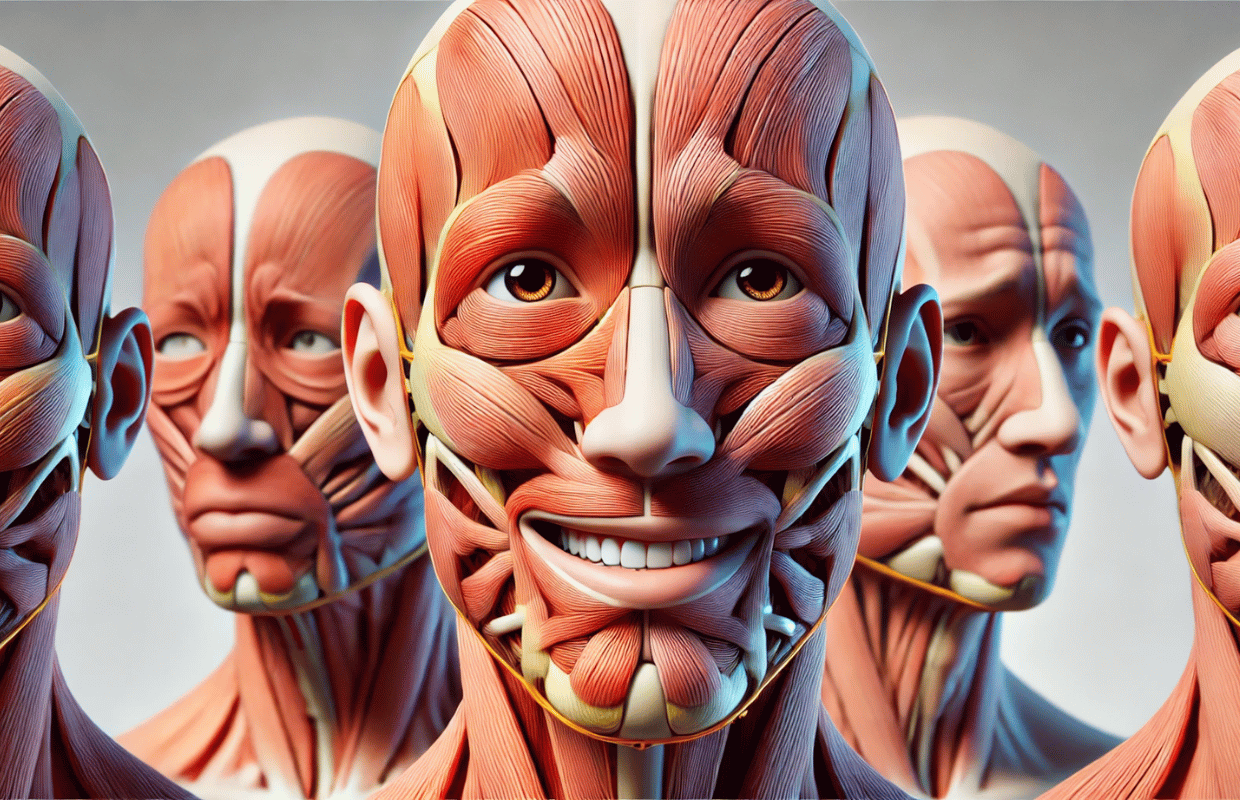
Techniques for Animating Facial Expressions
Keyframe Animation
The most common method for creating facial expressions is keyframe animation. Animators adjust different facial muscles using control rigs to create facial expressions. They set keyframes when they make changes on each muscle and create the animation over time.
Facial animation is rarely created straight ahead without preparation. Reference images are extremely helpful for determining which muscle to move and how far to achieve the desired pose. Big studios sometimes draw the whole animation frame by frame by hand and then create 3D animation based on those drawings. This makes creating 3D animation easier but the entire process longer. However, since the final quality is more important for big studios like Disney and Pixar, this method makes perfect sense.
There is a less time-consuming alternative to creating reference images as well. Many studios pay actors to perform scenes, recording the footage as reference. That is very useful in creating key poses. 3D animators then create the animation based on individual frames of the reference footage.
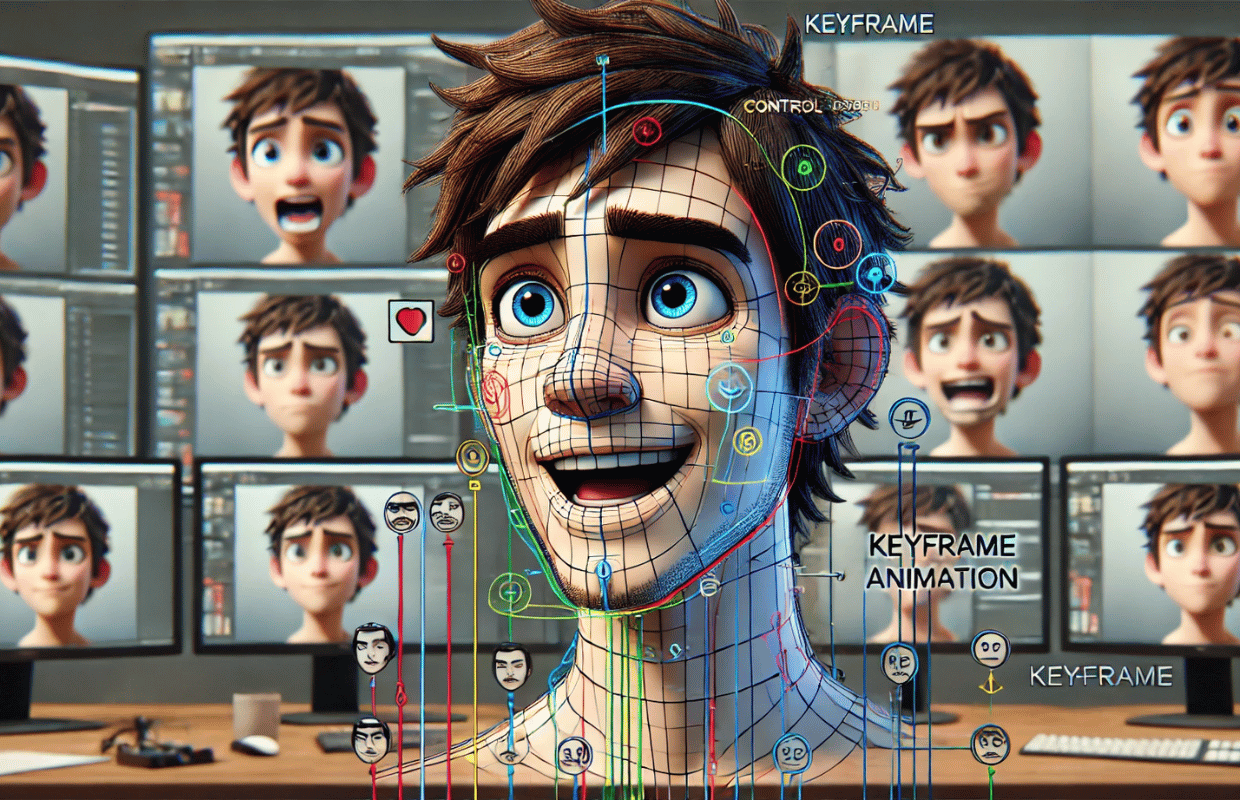
Read More: Keyframe Animation Tips
Blend Shapes
Blend shapes are a way of deforming the geometry of a 3D mesh to create the desired shape. For example, a lip-sync animation can be created by using multiple shapes for the mouth and blending them to create animation over time. Blend shapes make it easier to animate facial expressions.
Motion Capture
Motion capture is a popular way of creating animation. In a motion capture pipeline, actors wear special suits that track the movements of each part of their body including the face. These trackers collect movement data accurately, which is then transferred to animation programs later. The movement data is then applied to 3D characters to create accurate 3D animation faster. Motion capture suits are expensive and require a complicated setup. This technique is often used by big movie, animation, and game production companies to create high-quality facial animation. Motion capture is used widely as the primary method for creating facial animation in many studios. The movie Avatar was entirely animated using this technology.
AI Motion Capture
Artificial intelligence has facilitated facial animation as well. Tools like MetaHuman and iClone have AI face trackers that capture facial video in real-time using an iPhone and then apply it to 3D characters. These tools are ideal for creating facial animation for games.
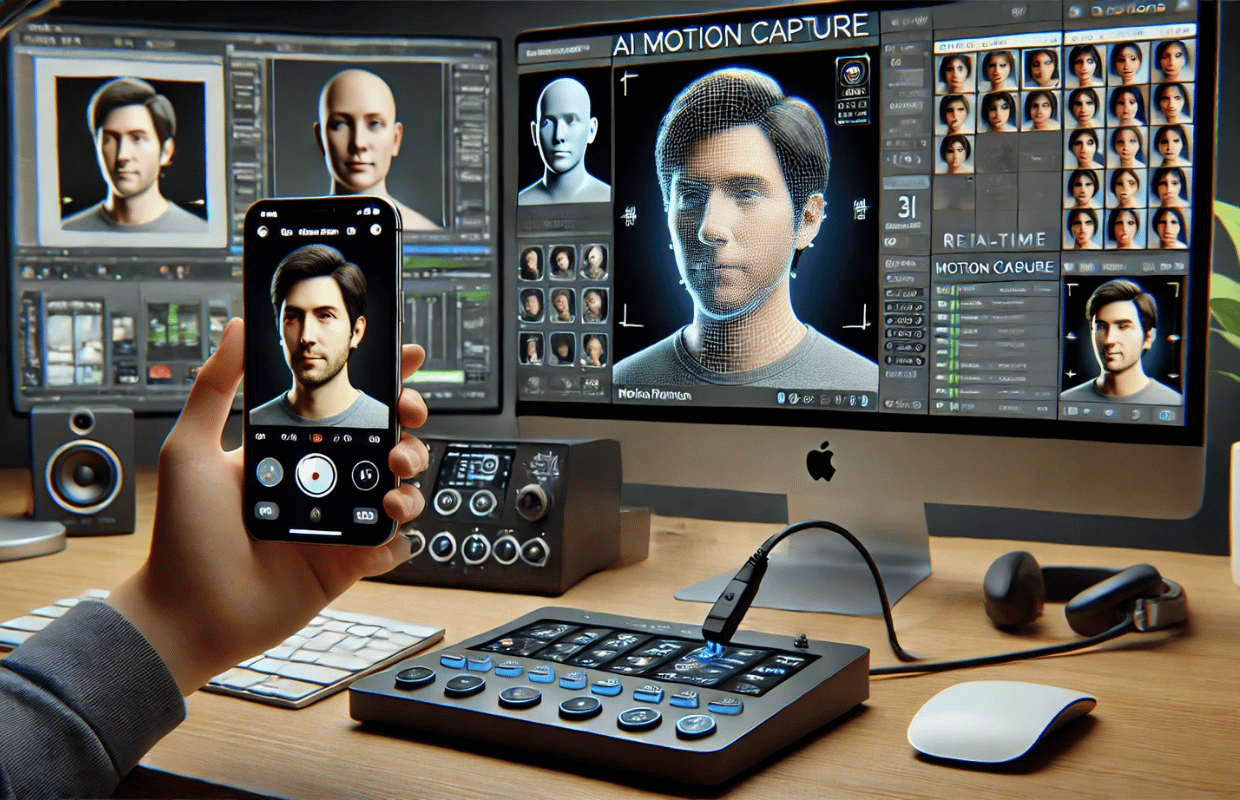
How to Express Different Emotions in Animation
Although reference images facilitate facial animation, sometimes they are not enough. It is helpful to think carefully about the action you want to animate, act it out yourself, and then recreate it in animation. Animators should understand how changing each part of the face contributes to creating emotions. Let’s explore some key concepts in this regard.
Eyes
The eyes are vital in expressing emotions. Wide eyes express surprise or fear while narrow eyes imply anger or suspicion. When looking down, eyes imply sadness, shyness, or lack of confidence. Looking upwards can express hope, thinking, or daydreaming.
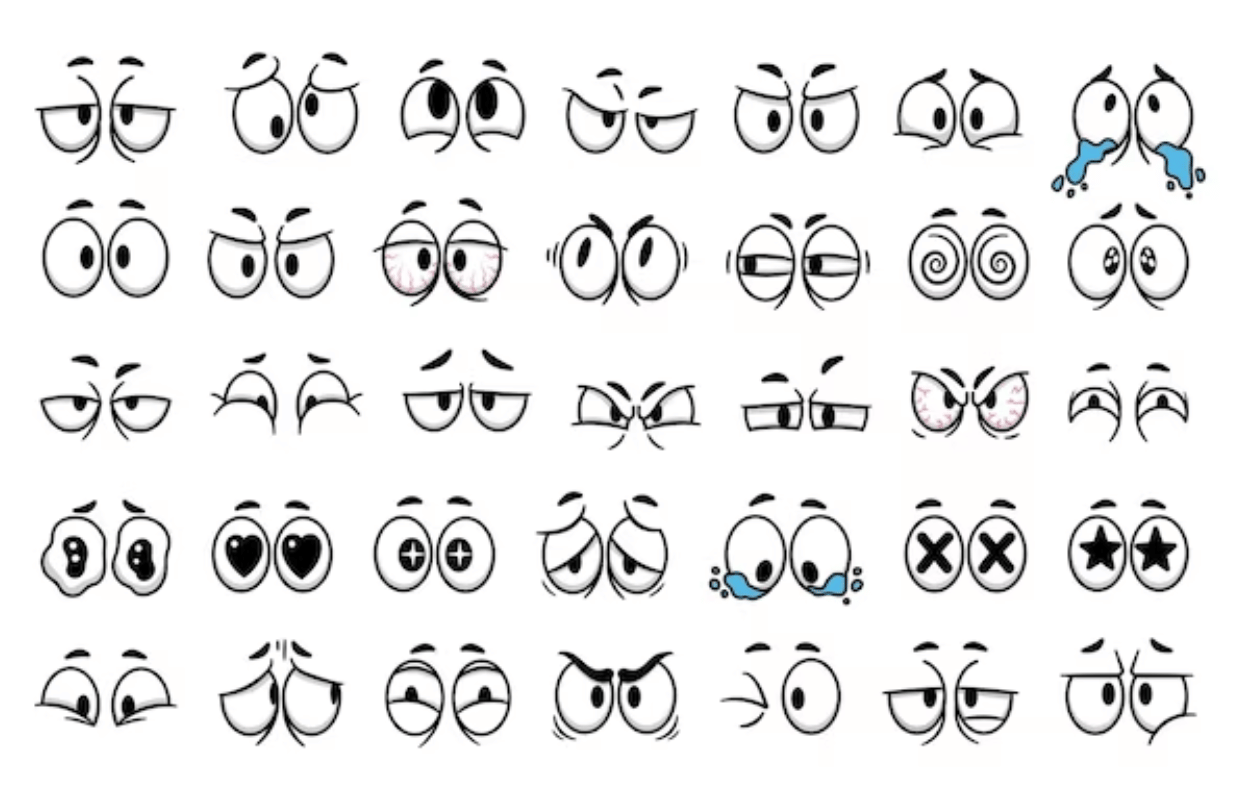
Mouth
The mouth is just as important as the eyes in expressing emotions and it can take many shapes. When the lips are slightly open, the mouth implies satisfaction or mild happiness. When they are wide open, they can express excitement or amusement. Many emotions are expressed through different mouth shapes. It’s a good idea to have a reference for different mouth shapes and animate based on them.
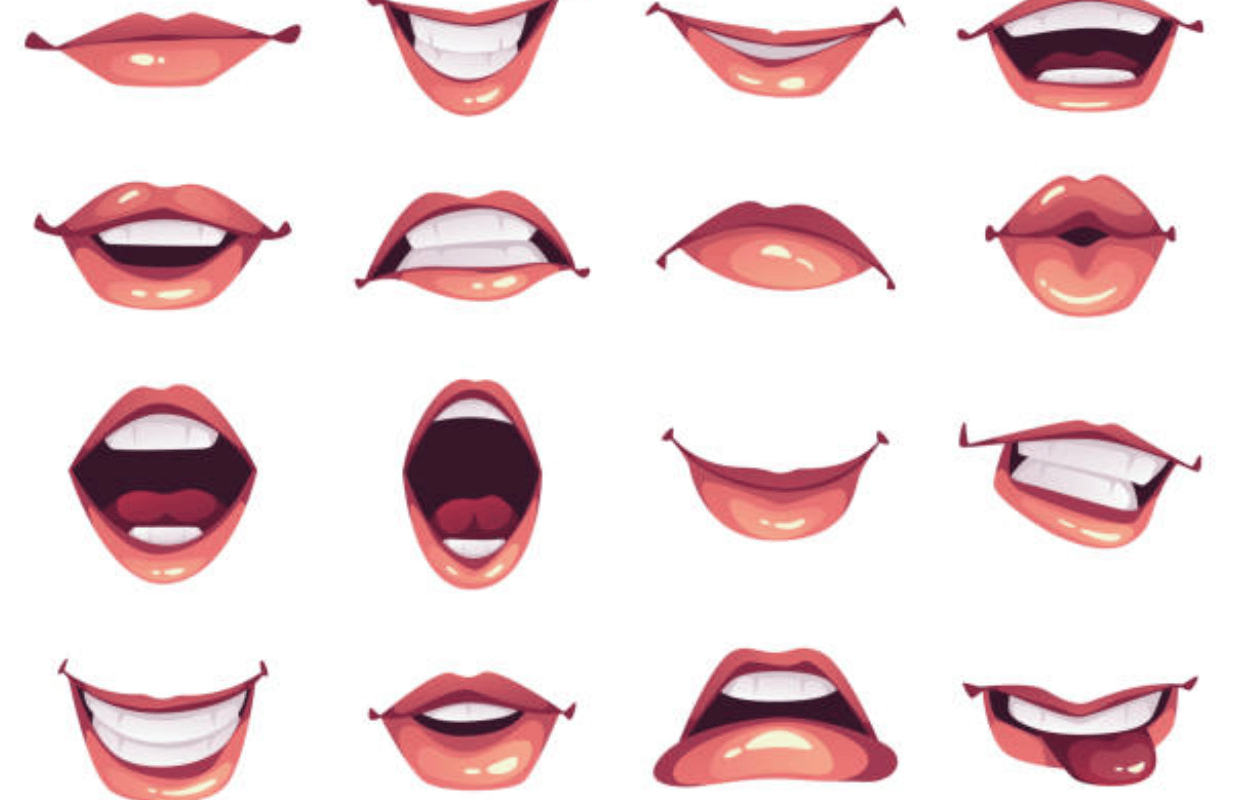
Eyebrows
Eyebrows are one of the first facial features that demonstrate emotions. When they are raised, they indicate shock or surprise. When they are downward and inward they imply anger. Raised corners often show sadness, while relaxed eyebrows mean happiness.
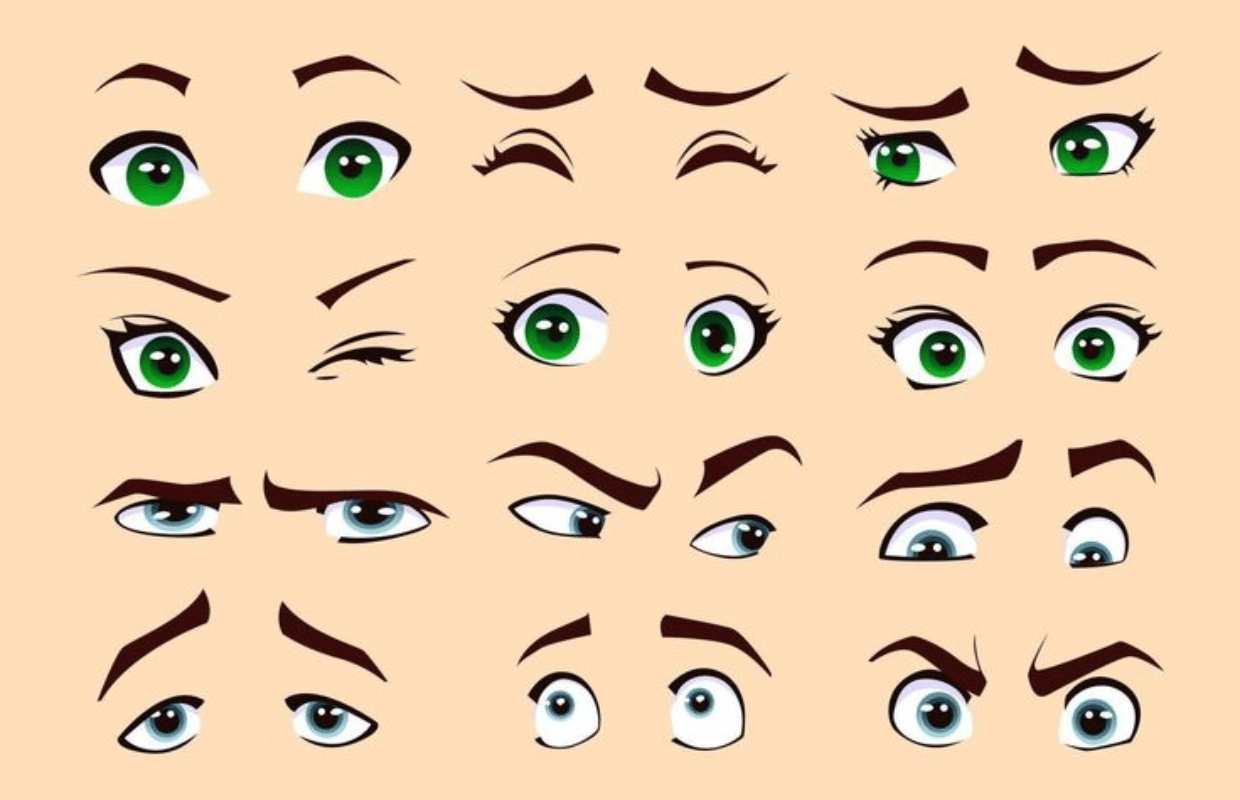
The Role of Cheeks, Nostrils, and Chin
The Cheeks, nostrils and the chin are considered secondary facial features in animation. They are not as important as eyes, eyebrows and the mouth, but they help create realistic animation. For instance, cheeks are raised when we smile. Or a trembling chin indicates sadness or fear. Sometimes these movements are not even noticeable in reference images and not all actors are able to recreate every emotion perfectly. Being aware of these intricate secondary facial movements is very useful for creating believable emotions.
Timing Facial Expressions
Creating facial animation that expresses emotions clearly requires animators to work on various parts of the face in each frame. To create various emotions, the eyes, mouth, and eyebrows should be moved and keyframed simultaneously. These movements should be timed and synced to convey emotions.
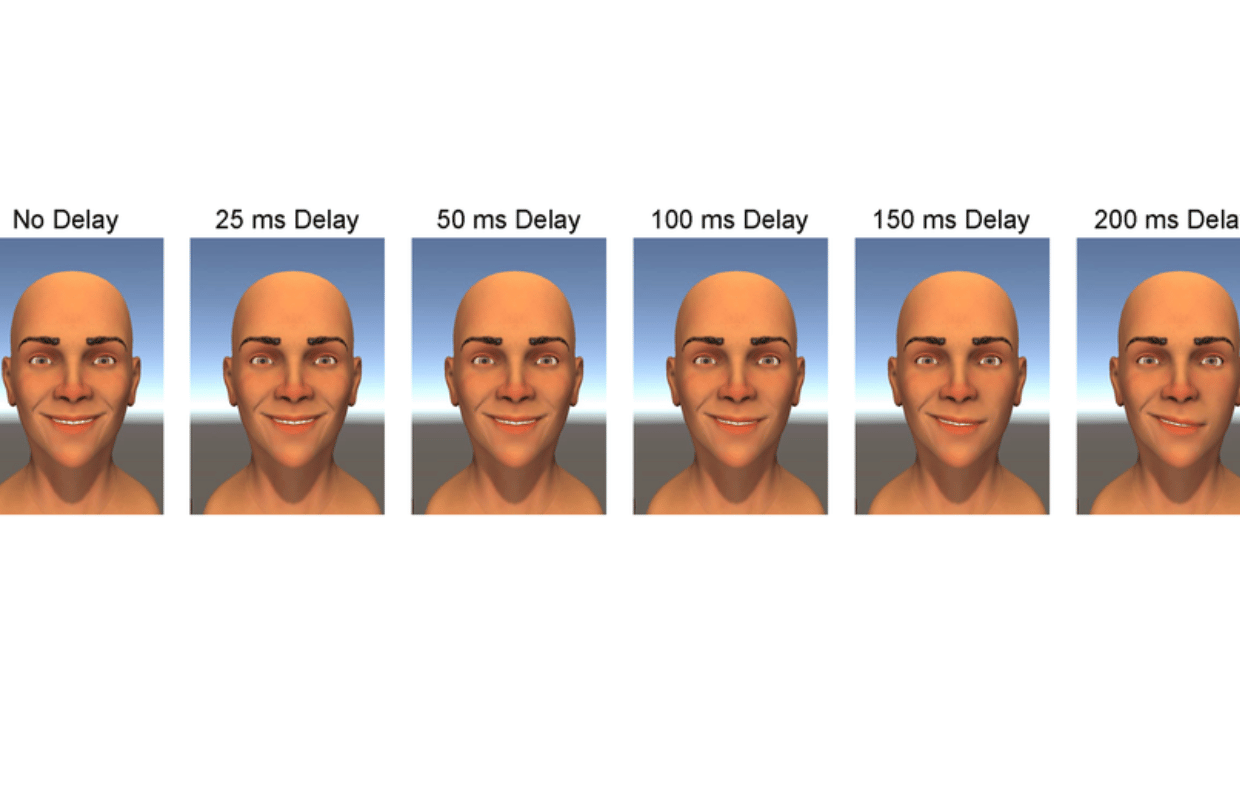
Read More: Facial Animation Tips
Testing and Iterating
Animating facial expressions requires continuous testing. It is a common practice in the industry to revise and edit animated shots through multiple iterations. Facial animation is no different. It is crucial to ensure that facial animations are harmonious, look good from various angles, and are expressive in different lighting. Syncing facial expressions and voices is a time-consuming task as well that requires precise keyframing and refining.
Final Words
Facial expressions are an indispensable part of professional animation as they are essential in telling stories. Conveying emotions through animation requires careful planning and dedication. Creating believable facial expressions is not something every studio can achieve. It requires skilled animators and a highly technical pipeline. However, with new tools and techniques, it is becoming more achievable every day. If you are an animator and looking to improve your facial animation skills, there are hundreds of free videos on YouTube that can help you learn a great deal. And if you are working on a game or a low-budget animation project and you don’t have proper animation skills, there are various tools that can facilitate the whole process for you. We recommend looking into tools like iClone, Character Creator, and Unreal Engine for a more approachable pipeline.
